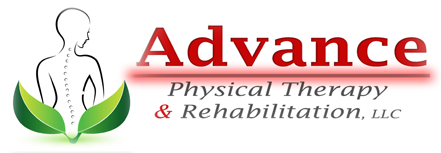
07 Mar Physical Therapy to Treat Hip Injuries
Hip injuries can detract from your enjoyment of life, and at their worst, they can make everything from getting out of bed in the morning to walking down the stairs excruciatingly painful. Instead of relying on dangerous drugs or invasive surgeries to treat hip pain, an increasing number of patients are choosing to try physical therapy instead. Learn more about physical therapy and how this type of treatment can help get rid of your hip pain for good.
What Is Physical Therapy?
Physical therapy is a type of treatment that uses the body’s own strengths to facilitate the healing process. The medical professionals who administer this type of treatment are called physical therapists or kinesiologists, and they use a variety of evaluation and body movement techniques to help patients recover range of motion and overcome pain.
Unlike surgery, physical therapy is non-invasive, and it isn’t usually very painful. While drug treatments for hip pain only provide temporary solutions with plenty of accompanying side effects, physical therapy equips patients with the tools they need to manifest permanent solutions to their pain problems.
What Are Some Components of a Physical Therapy Evaluation?
Physical therapy can be used to treat a wide variety of different conditions, and the physical therapy process always begins with an initial evaluation. During this evaluation, a physical therapist may use any number of established techniques to determine the source and nature of a patient’s hip pain:
Gait Evaluation
A physical therapist generally assesses a patient’s gait early in the evaluation process. By examining how you walk, a physical therapist will be able to learn more about the underlying cause or causes of the type of hip pain that you are experiencing.
Palpation
This aspect of the evaluation process involves the use of the hands to assess the hip structure. Palpation can discover any abnormalities in the hip structure, and it can also determine which areas are painful.
Range of Motion Tests
Range of Motion (ROM) tests are conducted to determine the extent to which a patient can move an affected joint. In some cases, special instruments may be used to further determine the way in which a patient’s hip joint is moving.
Strength Tests
By measuring the strength of the muscles surrounding your hip, a physical therapist can determine whether or not muscular issues are contributing to your hip pain.
Functional Mobility Tests
A physical therapist may ask a patient to perform various motions, such as climbing stairs or running, to determine the effect to which pain is affecting the patient’s mobility.
What Types of Hip Pain Does Physical Therapy Treat?
Pain can occur in different areas around the hip, and pain occurs in different areas of the hip for different reasons. Here are some examples of the types of hip pain that physical therapy can treat:
Groin and Front Hip Pain
Pain in this area of the hip is generally indicative of arthritis in the hip joint. The front part of the hip is called the anterior hip, and pain in this area can also be caused by a rare condition called hip femoroacetabular impingement (FAI) or muscular strain.
Side Hip Pain
Muscular issues are usually to blame for pain in the side of the hip area. In addition, this type of pain can be caused by hip bursitis, which occurs when the fluid sac in the hip joint becomes inflamed. A condition called iliotibial band pain can also cause pain in this part of the hip.
Buttock and Rear Hip Pain
Patients who are experiencing pain in this part of the hip usually have issues in their lower backs. In some cases, lower back pain can transfer to the hip area even though it is actually caused by a spinal issue.
What Are Some Effective Physical Therapy Exercises for Hip Pain?
Upon the completion of a full examination, a physical therapist may suggest that a patient perform various simple exercises to improve ROM and reduce pain. Some of these exercises should only be performed under a physical therapist’s supervision, but others can be performed at home:
1. Hip Squeeze
This simple exercise can improve the strength of your groin muscles, which help control the position of your knees and stabilize your hips. While laying on your back, place a small, malleable object, such as a ball, towel, or pillow, between your knees and squeeze it gently. Hold this position for five seconds, and then release. Repeat this movement 10 times, and discontinue this exercise immediately if you feel any sharp pain.
2. Straight Leg Raise
Raising your leg straight up while laying down can improve the strength of the muscles on the fronts of your hips and your quads. On a yoga mat or otherwise cushioned surface, keep one knee bent while you raise the other leg up into the air. Hold this position for two seconds, and then slowly lower your leg. Repeat this exercise about 10 times.
3. Side Leg Raise
This exercise strengthens your gluteal muscles, which maintain the proper positions of your hips and knees. Laying on your side, bend your bottom knee, and raise your upper leg straight up. Repeat this exercise 10 times, and switch to the other side.
4. Hip Rotation Stretch
This movement is also known as the piriformis stretch, and it improves the range of motion of your hip joints. Sit on the floor with one leg laid out straight in front of you. Cross your other leg over your knee, and turn your torso in the other direction.
With one arm, pull your knee across the front of your body, and use your other arm to stabilize your body. Hold this position for five seconds, and then gently release. Repeat this exercise 10 times on each side.




Sorry, the comment form is closed at this time.